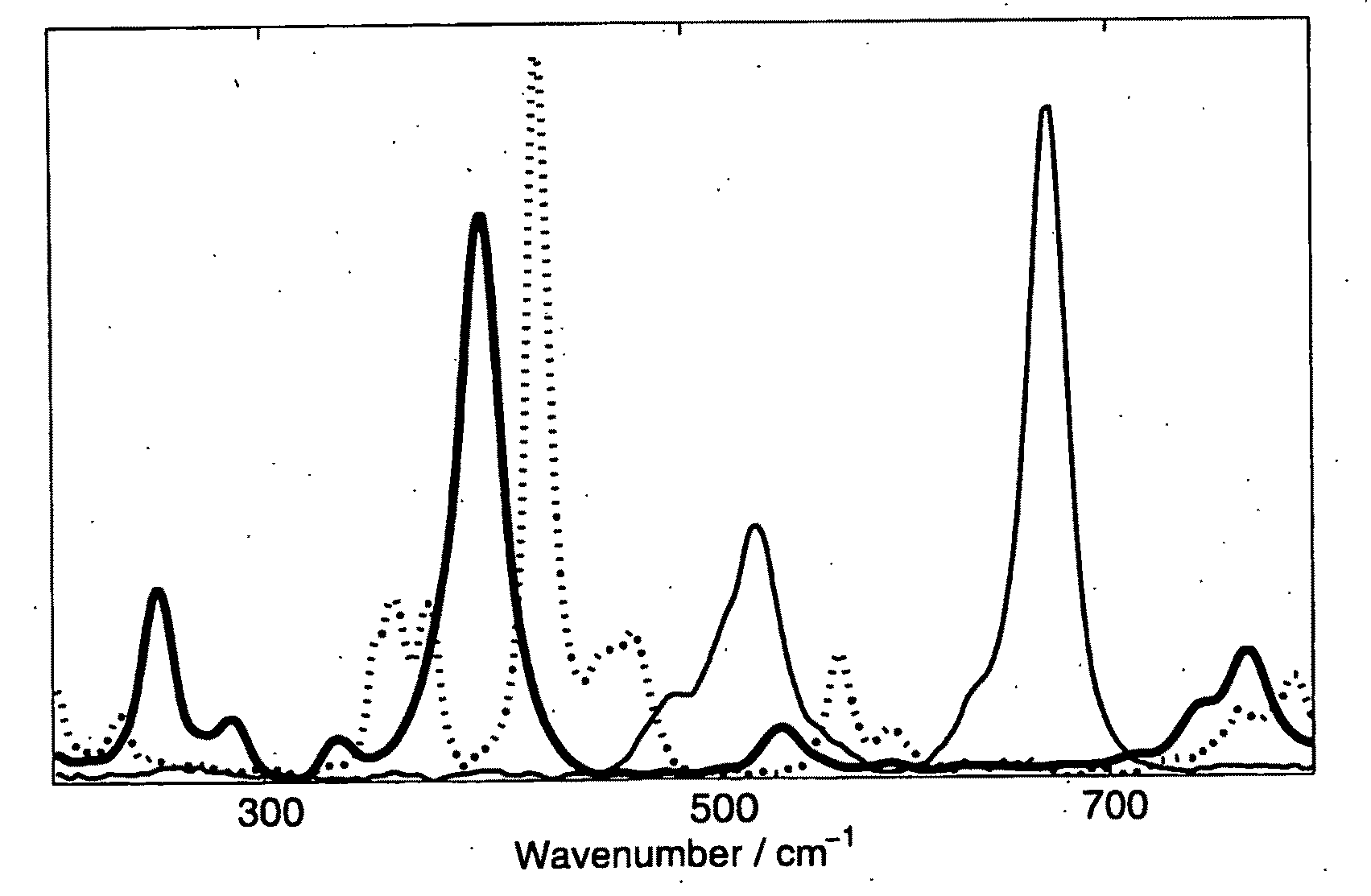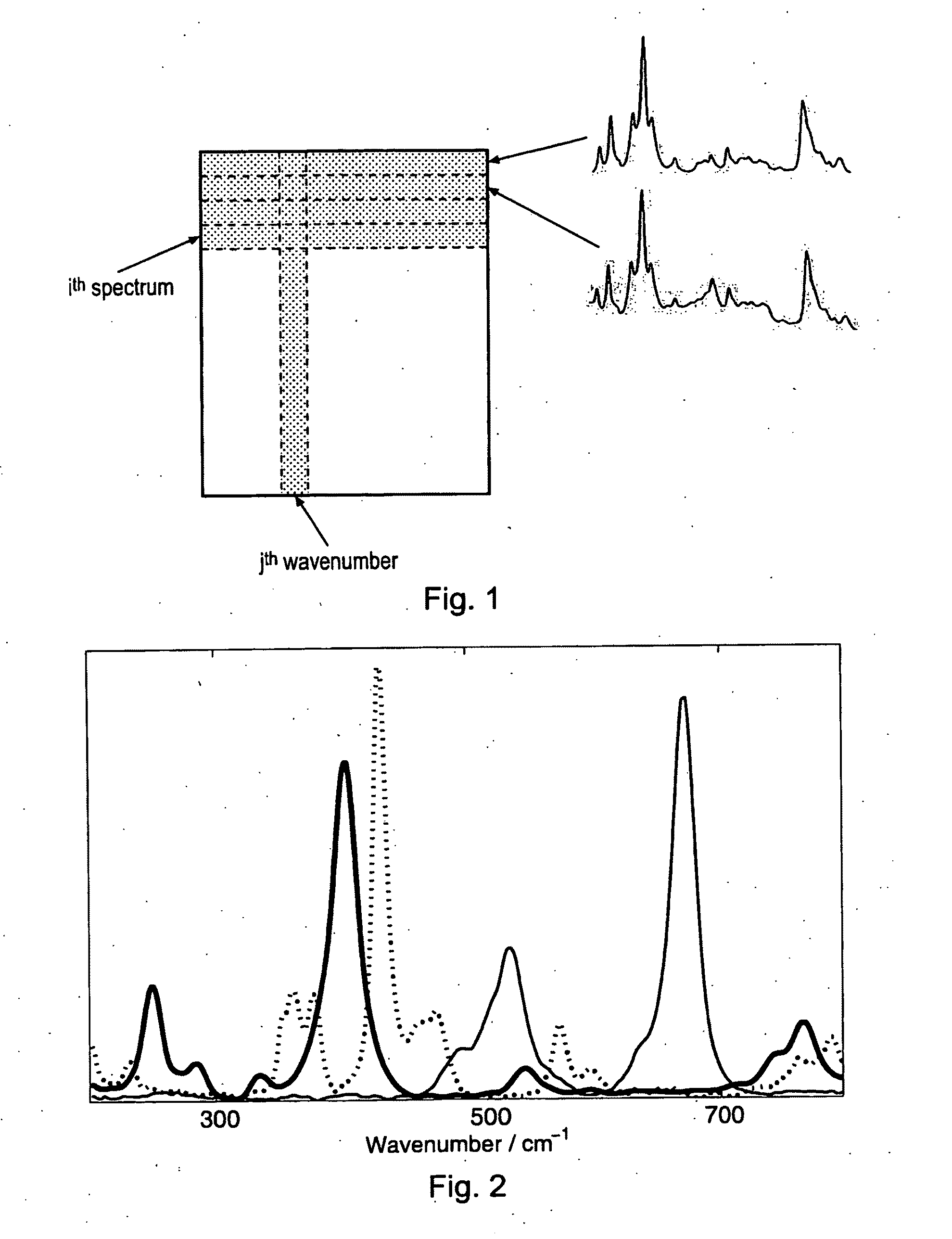Spectroscopic analysis methods
a spectroscopic and analysis method technology, applied in the field of spectroscopic apparatus and methods, can solve the problems of inability to successfully use techniques, inconvenient image analysis, and complex task of creating images
- Summary
- Abstract
- Description
- Claims
- Application Information
AI Technical Summary
Benefits of technology
Problems solved by technology
Method used
Image
Examples
example i
Simulated Mixture Spectra
[0068]PCA shows clearly that there are 3 components in the data set, as expected. The reference spectra and the component spectra that were resolved by the different MCR methods are shown in FIG. 3. A numerical comparison of the models is given in Table I. The component 1 spectrum resolved by OPA(spec) / MCR-ALS matches the reference spectrum well, but the other two component spectra also show features of the first. Concomitant with this is a shift in concentration from component 1 to the latter two, resulting in poor predictions of the concentration values.
[0069]With OPA(conc) / MCR-ALS all spectra appear to be reasonably well resolved, although the correlation of component 1 spectrum with the reference spectrum is an order of a magnitude worse than the resolution of this spectrum by the other two methods. The poorer resolution of this spectrum is most apparent in a slight dip on the high wavenumber edge of its main Raman band at 400 cm−1. On this edge, the ban...
example ii
Pharmaceutical Powder
[0071]Principal component analysis of the map data showed that ten components are present in the data set. The ten components were resolved by the three MCR-ALS techniques as described previously. Results of the different methods are shown in Table II. The first nine resolved spectra, compared to reference spectra where available, are given in FIG. 4 and the images from empty modelling are given in FIG. 5.
[0072]The empty modelling results can be interpreted as follows. There are six components that represent independent compounds: cellulose (component 1), lactose (component 2), dicalcium phosphate (component 3), the API (component 4), an unidentified excipient (component 5) and magnesium stearate (component 7). Components 6, 8 and 10 result from baseline variations. Component 9 is due to different rotational variations between the two lactose crystals (compare the images of component 2 and 9 in FIG. 5).
[0073]These observations are less obvious from the OPA(spec)...
example iii
Ranitidine Tablet
[0078]The overall concentration of API in the tablet is over 50% by weight. As the tablet has a coating, the percentage of API will be even higher in the tablet core. APIs are also usually stronger Raman scatterers than excipients. It is therefore reasonable to assume that spectra of the API will be present in the data set in a relatively pure form and that the condition required for empty modelling should be fulfilled.
[0079]PCA determined that five components are present in the data set. Spectra of the components resolved by the different MCR methods can be seen in FIG. 8 and numerical results are given in Table III. The first component corresponds to form H of ranitidine hydrochloride. The data set contains spectra that are very similar to this, and the first spectra resolved by OPA(spec) / MCR-ALS and empty modelling match it well. The second component corresponds to cellulose, for which a reference spectrum is included in FIG. 8. The component 2 spectra resolved b...
PUM
 Login to View More
Login to View More Abstract
Description
Claims
Application Information
 Login to View More
Login to View More - R&D
- Intellectual Property
- Life Sciences
- Materials
- Tech Scout
- Unparalleled Data Quality
- Higher Quality Content
- 60% Fewer Hallucinations
Browse by: Latest US Patents, China's latest patents, Technical Efficacy Thesaurus, Application Domain, Technology Topic, Popular Technical Reports.
© 2025 PatSnap. All rights reserved.Legal|Privacy policy|Modern Slavery Act Transparency Statement|Sitemap|About US| Contact US: help@patsnap.com



